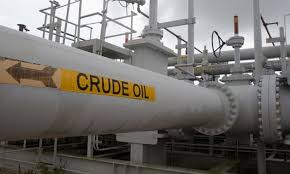
ExxonMobil has some big plans in mind in terms of the amount of oil it intends to produce and move out of the Permian Basin in West Texas and Southeast New Mexico.
The Texas company announced it will produce more than 1 million oil-equivalent barrels a day by as early as 2024. That’s an increase of a whopping 80% through utilization of the company’s 48 drilling rigs in the basin.
ExxonMobil’s resource base in the Permian is about 10 billion oil-equivalent barrels and an analysis shows it will likely grow.
“We’re increasingly confident about our Permian growth strategy due to our unique development plans,” said Neil Chapman, ExxonMobil senior vice president. “We will leverage our large, contiguous acreage position, our improved understanding of the resource and the full range of ExxonMobil’s capabilities in executing major projects.”
“Our plans are attractive at a range of prices and we expect them to drive more value as we continue to lower our development and production costs,” Chapman said.
ExxonMobil’s investments in the Permian Basin are expected to produce double-digit returns, even at low oil prices. At a $35 per barrel oil price, for example, Permian production will have an average return of more than 10 percent.
The anticipated increase in production will be supported by further evaluation of ExxonMobil’s Delaware Basin’s increased resource size, infrastructure development plans, and secured capacity to transport oil and gas to ExxonMobil’s Gulf Coast refineries and petrochemical operations through the Wink-to-Webster, Permian Highway and Double E pipelines.
Among the company’s key advantages in the Permian, is its acreage position. The company has large, contiguous acreage that enables multi-well pads in large development corridors connecting to efficient gathering systems, reducing development costs and accelerating production growth. ExxonMobil’s scale, financial capacity and technical capabilities enable the company to maximize the value of the resource.
ExxonMobil is actively building infrastructure to support volume growth. Plans include construction at 30 sites to enhance oil and gas processing, water handling and ensure takeaway capacity from the basin. Construction activities include central delivery facilities designed to handle up to 600,000 barrels of oil and 1 billion cubic feet of gas per day and enhanced water-handling capacity through 350 miles of already-constructed pipeline.
ExxonMobil remains one of the most active operators in the Permian Basin and has 48 drilling rigs currently in





